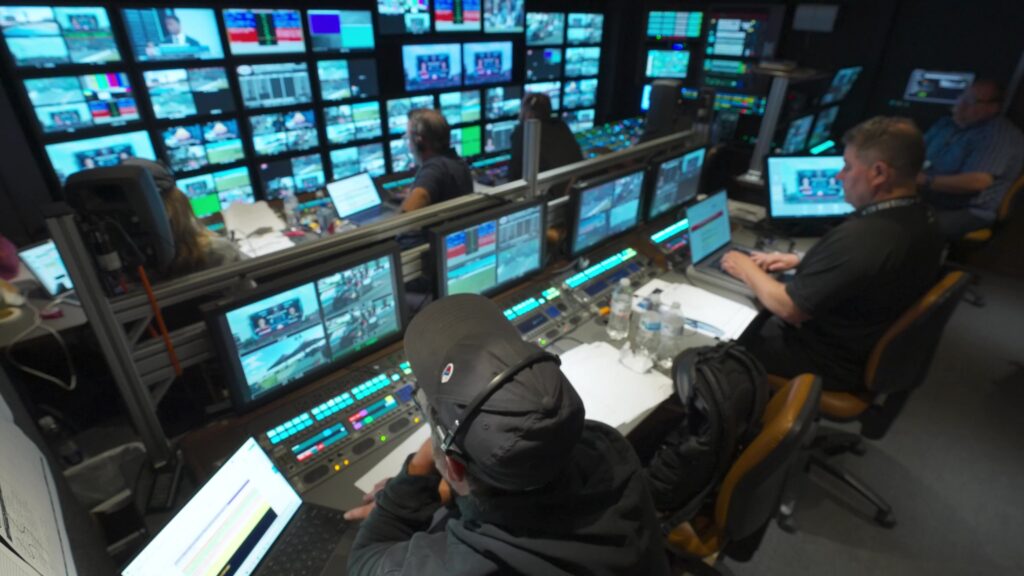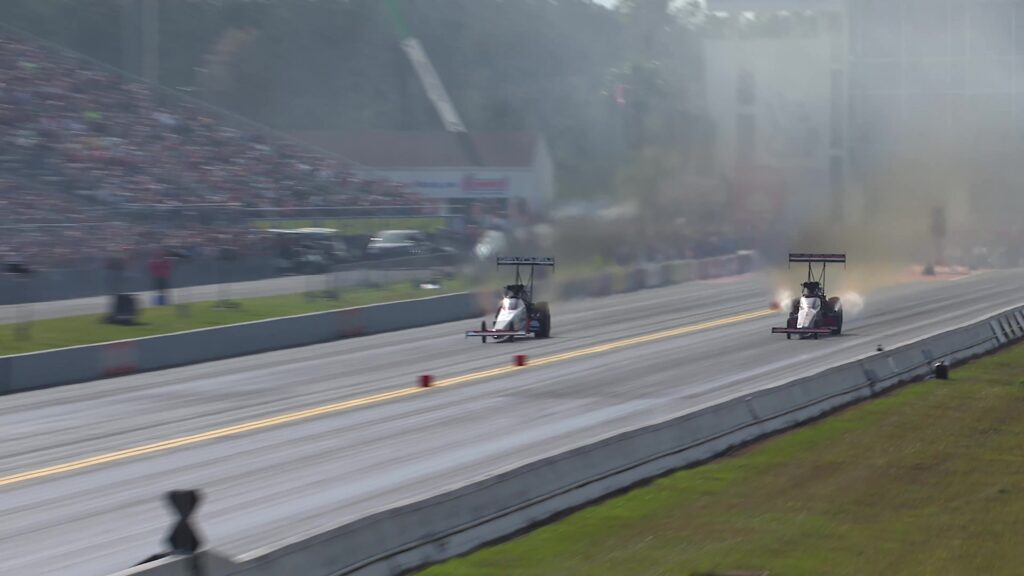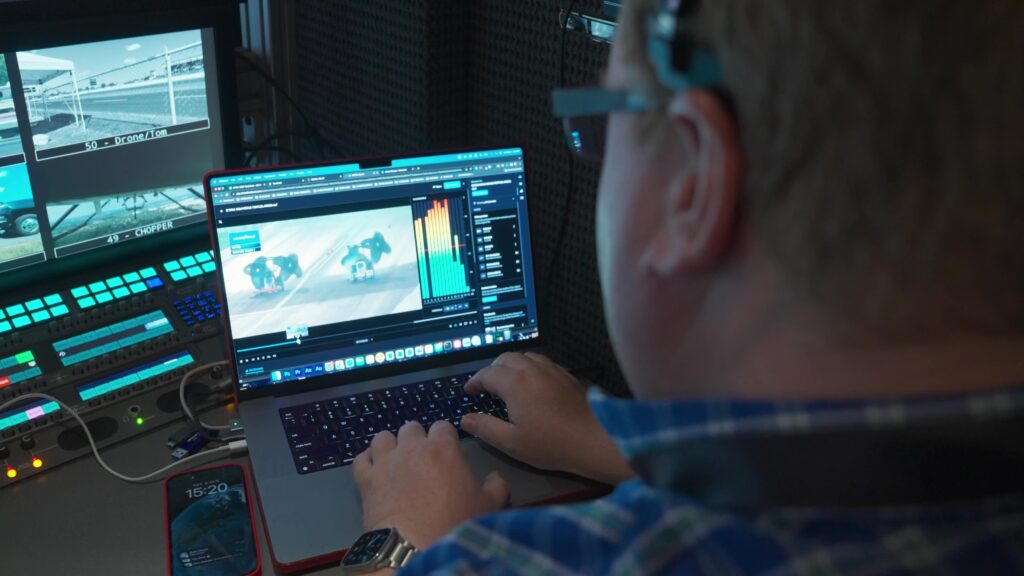Business
Sony’s Ci Media Cloud Keeps NHRA Moving
Story Highlights
Providing a safe environment for its drivers to quickly get from point A to point B is the mission of the National Hot Rod Association (NHRA). The organization has the same goal for its media asset management, and with Sony’s Ci Media Cloud platform, NHRA global production workflows are moving as fast as the action on its tracks.
NHRA content teams regularly ingest hours of weekly race footage, securely share and remotely edit files with teams nationwide and then deliver final assets to multiple platforms, partners, and networks – all under tight deadline pressures.
 With the high volume of content NHRA generates, Ci was the logical choice for transforming its on-site and cloud-based workflows.
With the high volume of content NHRA generates, Ci was the logical choice for transforming its on-site and cloud-based workflows.
“We want everyone to have the right tools to do their jobs efficiently and get our content out as quickly as possible,” said Rob Hedrick, technical operations manager and senior director of production for the National Hot Rod Association. “Sony Ci is the uniting space where everybody can go to store, edit and share assets, securely and quickly.”
The NHRA team handles all production and distribution for its regular weekly TV programming, including 20 national events as part of the “Mission Foods Drag Racing Series” that airs on Fox Sports, plus an average of eight broadcasts on the FOX broadcast network, as well as shoulder programming, divisional and regional events. The team serves its NHRA TV OTT subscribers, multiple content delivery platforms and social media channels.
Their workload also includes managing content for in-venue experiences, post-production shows like “NHRA in 30” and the “Lucas Oil Sportsmen series” and “Pro Mod” series, as well as ongoing marketing, promotional and archival content and a robust FAST channel where fans can watch content from the inception of the sport in 1951.
The team manages at least three simultaneous productions during every racing event. That translates to about four terabytes of content at each event, with anywhere between eight to 12 hours of video from as many as 50 cameras connected via fiber, wireless or directly to the cloud, and the cameras shooting content exclusively for social media.
Annually, the amount of content created by the NHRA production teams ranges between 600 to 900 hours – and every bit of that content funnels through Ci.
Getting Content Out Faster …
“We’re dealing with multiple days’ worth of multiple hours of event footage,” said Megan Sewell, director of post-production for NHRA. “Ci lets us break it all down and organize it by the different runs, special events or scenics [a track or surrounding area]. We have to produce multiple cut-down versions within 24 hours of an event, and we are able to put those together almost immediately. It’s work that we couldn’t do without Sony Ci.”
Sewell recalled multiple examples of Ci saving the production team valuable time at high-profile moments. For example, following each year’s final event, NHRA champions are announced and then recognized at an awards ceremony the next day with each champion celebrated with a one- to two-minute video highlight reel.
“Using Ci, we’re able to upload Sunday’s files immediately, turn them around to create those videos overnight and have them ready for Monday,” she said.
 With audiences on all platforms now accustomed to on-demand content, the Ci platform’s MediaLog app saves the NHRA social media team at least 90 minutes of work following each event.
With audiences on all platforms now accustomed to on-demand content, the Ci platform’s MediaLog app saves the NHRA social media team at least 90 minutes of work following each event.
“Timeliness is everything since we’re constantly pushing content and updates out to our fans,” said Nykki Schele, senior social media manager at NHRA. “Before Ci, I would have to go to the TV truck with a hard drive to get clips at the end of the night. Now, whether I am in the media room, in the pits, or at the top end of the racetrack, I can access content and get it out to our social channels immediately.”
Ci makes clipping longer-form pieces into shorter social-friendly files easy and fast, and also helps remote teams and different departments share files seamlessly.
“We’re often creating pieces on the social side that the TV or in-venue teams would like to use,” Schele said. “We can dump everything into Ci, push it out to multiple departments at once, and everyone has access to the same videos, which is super helpful.”
Using a cloud-based platform like Ci eliminates the need for NHRA to maintain large on-premises storage pools in its offices, especially with most people working remotely or out of multiple offices. Editors, directors, announcers, and producers are all located in different cities, but everyone is able to view everything, assemble a show, check the timing, make approvals, and then send it to its final destination.
With such a distributed team, the flexibility in how NHRA can set up separate spaces for different teams in Ci is a significant benefit. The ability to create and assign different Workspaces for various workflows and the ability to quickly share access to footage with remote team members enhances productivity.
“I can easily communicate with my producer in California or a track in Saint Louis asking for video,” Sewell said. “Ci’s cloud-based transferring and storage makes our communication so much better.”
A Successful Track Record
NHRA started using Ci in 2017 and has since continually expanded its use of the platform’s capabilities: uploading, storing, feeding in live streams, logging timecodes of key moments, and delivering; automating its ingest and upload processes; storing a 75-year library of archival footage, sharing between departments; and fully taking advantage of field-to-cloud workflow.
 “We quickly realized how important and efficient it is to have a digital asset solution that can be used in a quick and high-functioning capacity,” said Stephen Reintjes, vice president of broadcasting for the NHRA. “We spent the first few years exploring its features and potential, and now there’s no turning back for us. It’s an ongoing process and to even suggest that we’ve scratched the surface of what Ci can do is an understatement.”
“We quickly realized how important and efficient it is to have a digital asset solution that can be used in a quick and high-functioning capacity,” said Stephen Reintjes, vice president of broadcasting for the NHRA. “We spent the first few years exploring its features and potential, and now there’s no turning back for us. It’s an ongoing process and to even suggest that we’ve scratched the surface of what Ci can do is an understatement.”
Clear Cost Savings
When NHRA first started using Ci, the potential storage, time, and cost savings were immediately clear. They evaluated other on-premises storage options that wouldn’t have been able to contain half of the content currently stored in Ci — and would have cost millions more over the long term.
Reintjes noted that Ci’s automated storage management policies allows NHRA to create policies that push content into archive storage and then further down into S3 Glacier-based archive storage based on a pre-determined number of days, months or years.
NHRA’s annual race schedule typically has the same events occurring at the same times of year. The association established a rule that at 400 days races are pushed into archive storage and then at 800 days pushed further into deep archive storage, allowing NHRA to effectively manage its storage costs without having to keep as much content in active storage.
“In every way, Ci is really the heartbeat for the back end of our entire production workflow,” said Hedrick. “Having it as part of our entire process to automate our full production workflow helps us to work more efficiently, deliver content quickly and be better storytellers.”









